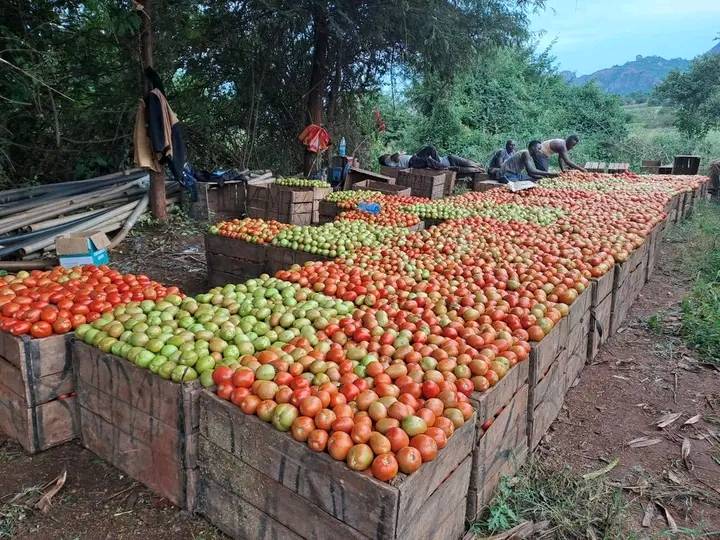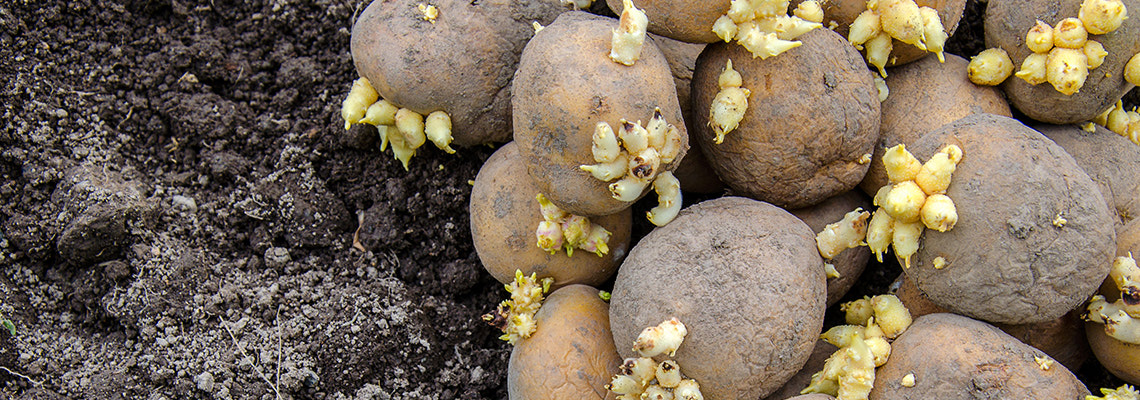GUIDE ON HOW TO GROW TOMATOES
Growing tomatoes is rewarding and relatively straightforward endeavor with the
right knowledge and approach. Here is a comprehensive guide on how to grow;
Step 1: Choose the Right Tomato Variety
Consider factors like climate, space, and purpose (e.g., slicing, canning, cherry
tomatoes).
Determinate varieties are bushy and compact, suitable for containers and smaller
spaces. Indeterminate varieties are vine-like and continue to grow throughout the
season, requiring support.
Step 2: Prepare the Soil
Select a sunny location with well-drained soil.
Test the soil pH and amend it if necessary (optimal pH range: 6.0 to 6.8).
Enrich the soil with compost or well-rotted manure to improve fertility and
structure.
Step 3: Planting
Start seeds indoors 6-8 weeks before the last frost date in your area. Transplant
seedlings outdoors when the soil has warmed and all risk of frost has passed.
Space plants according to their mature size (typically 18-36 inches apart for
determinate varieties, and 24-36 inches apart for indeterminate varieties).
Step 4: Support Structures
Install stakes, cages, or trellises to support indeterminate varieties and prevent
sprawling.
Tie the main stem to the support structure as it grows to encourage upward growth.
Step 5: Watering
Keep the soil consistently moist but not waterlogged, especially during flowering
and fruiting stages.
Step 6: Fertilizing
Apply a balanced fertilizer before planting and throughout the growing season
according to package instructions. Also avoid excessive nitrogen as it can lead to
lush foliage.
Step 7: Pruning and Maintenance
Remove suckers for indeterminate varieties to encourage larger fruits and better
airflow.
Remove lower leaves as the plant grows to improve air circulation and reduce the
risk of disease.
Monitor for pests such as aphids, tomato hornworms, and whiteflies.
Step 8: Mulching
Apply a layer of organic mulch, such as straw or shredded leaves, around the base
of the plants to conserve moisture, suppress weeds, and regulate soil temperature.
Step 9: Harvesting
Harvest tomatoes when they reach their mature color and are firm but slightly soft
to the touch.
Pick tomatoes regularly to encourage continued fruit production.
DISEASES AFFECTING TOMATOES, SYMPTOMS AND TREATMENT
Early bright- Dark brown or black lesions with concentric rings on lower leaves.
Treatment- Remove infected plant debris and practice crop rotation.
Late bright- dark, water soaked-lesions on leaves, stems and fruit.
Treatment- Remove and destroy infected plants to avoid spread.
Septoria leave spot- Small, circular spots with dark borders on lower leaves.
Treatment
-remove and destroy infected leaves from the garden.
-Apply fungicides containing copper during the early seasons.
-Improve air circulation by proper spacing.
Fusarium wilt- Yellowing and wilting of lower leaves, which progresses upwards.
Treatment
-Plant resistant tomato varieties.
-Practice crop rotation.
-Remove and destroy infected plants.
Blossom end rot- Sunken, darkened areas on the blossom end of fruit.
Treatment
-Avoid excessive use of high nitrogen fertilizers.
-Apply calcium- rich amendments such as gypsum.
-Ensure consistent soil moisture.
Tomato mosaic virus- Mottled yellowing and distortion of leaves, stunted growth,
and reduced fruit size and quality.
Treatment
-Remove and destroy infected plants.
-Control aphids and other vectors to prevent virus spread.





